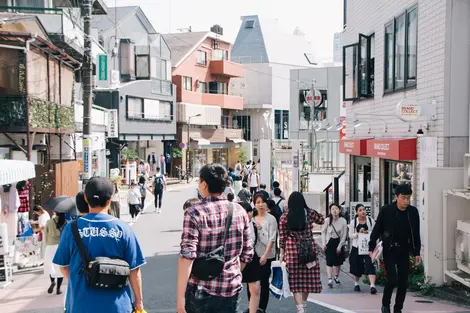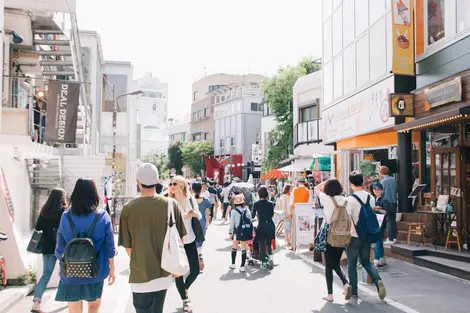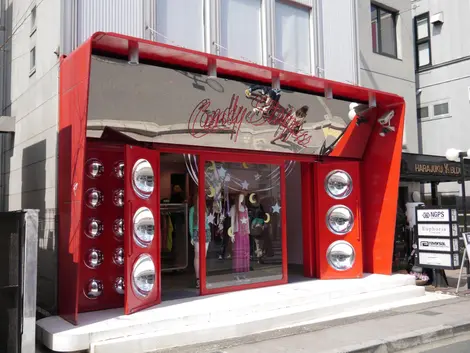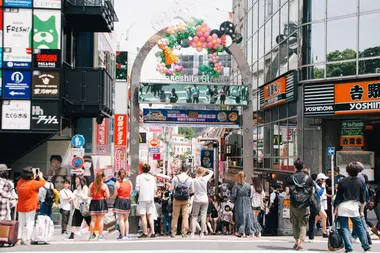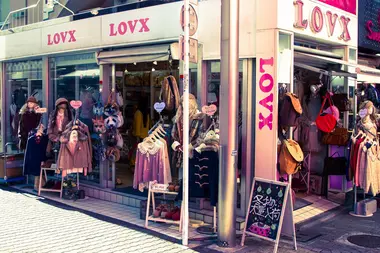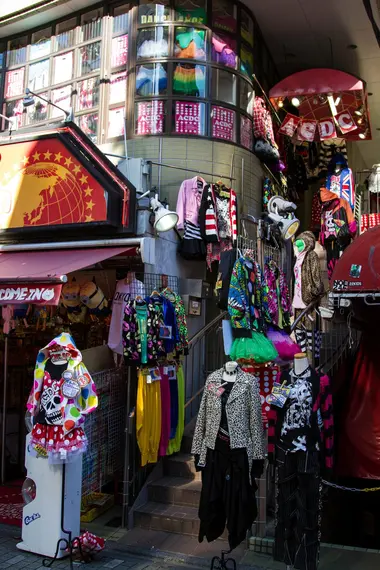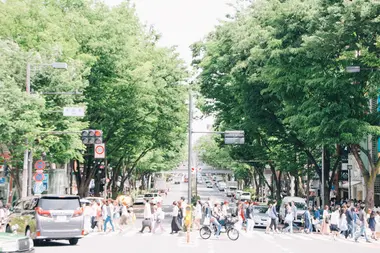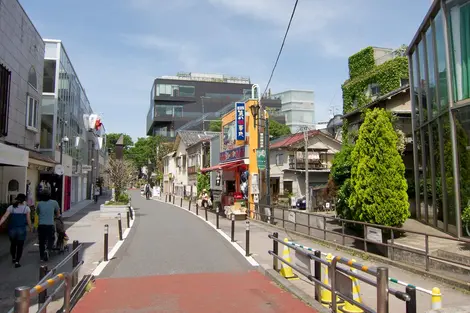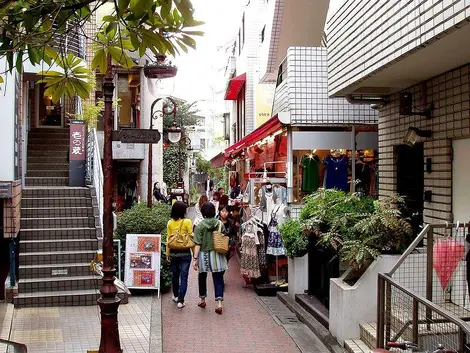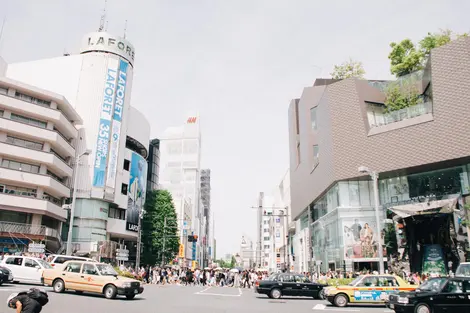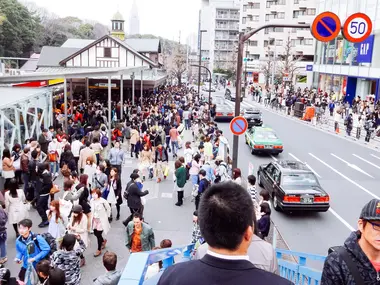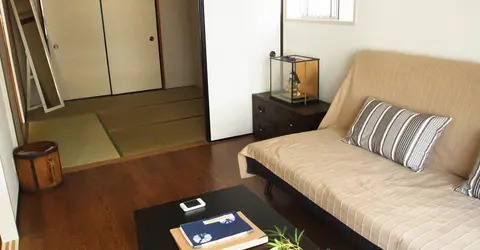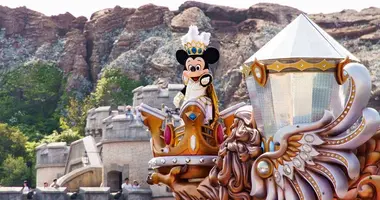Ura Harajuku 裏原宿
- Published on : 12/03/2019
- by : O.F.
- Youtube
The hidden streets of Harajuku
Ura-Harajuku is a collection of small, mostly pedestrianized shopping streets that have developed alongside the grand Ometesando and the bustling Takeshita-dori. These alleys contrast with their neighbors especially by their small independent shops and their restaurants.
The beating heart of Tokyo fashion
The love story between the Harajuku district and fashion begins at the end of the Second World War. At the time, with the archipelago under American occupation, young Japanese had access to Western culture and fashion for the first time. Curious about the obvious cultural differences and Western products entering the country, they quickly adopted certain aspects.
And it was in Harajuku that designers and artists then decided to settle. Harajuku then gradually became, in many minds, the fashion center of Tokyo.
Harajuku's true fashion culture today is best found in the alleyways known as Ura-Harajuku, or Urahara for short. More than in the very popular neighboring streets Takeshita-dori and Omotesando, the "Japanese Fifth Avenue, New York", it is there that Japanese fashion reinvents itself every day.
- Discover: Takeshita-dori and Omotesando
The Cat Street and its sisters
Cat Street is a pedestrian street connecting the Shibuya and Harajuku districts. Lined mostly with independent clothing stores and small cafes, it's a hotspot for Tokyo's hipsters.
Cat Street runs about 1.25 kilometers perpendicularly on either side of Omotesando. Although luxury boutiques are increasingly gaining ground on the street, it's still the main place where quirky-dressed teenagers go shopping in Tokyo.
There are in Cat Street and the alleys around, a large number of second-hand shops and thrift stores but also trendy clothing shops. You will even find street art there, which is a bit rare in Japan. This is a great place to encounter Japanese hipster culture in Tokyo.
They are also much quieter than the main streets of Shibuya or Harajuku, where the majority of people shop.
Art, beyond fashion
But Ura-Harajuku isn't just for fashionistas. There is indeed a whole range of things to discover, from art galleries and shrines to restaurants and cafes.
The art of printmaking with the Ota Museum, one of Tokyo's most famous art museums. It is mainly devoted to ukiyo-e (painting on wood). The museum is spread over two floors with around 12,000 works. It also presents temporary exhibitions by artists such as Tsukioka Yoshitoshi or Hokusai. It's the perfect place to escape the busy streets for a few hours and immerse yourself in Japanese artistic culture.
We also recommend the Design Festa Gallery, a free exhibition gallery. You can discover there the works of art of young talents, distributed in the 21 rooms which comprise the building. This space allows artists from all over the world to exhibit and sell their works, which can therefore be very eclectic.
The "street trend" also applies to restaurants. The area is home to The Great Burger, one of Tokyo's best burger joints; and one of the few places you can get an actual milkshake, Good Town Donuts, a hip cafe that serves donuts. Many cafes also offer delicious coffees with freshly ground beans.
Among all the restaurants, we also recommend the Sakura-tei. This restaurant specializes in Okonomiyaki, Japanese egg and cabbage pancakes from the Osaka region. The explanations in English and the bilingual staff ensure you an unforgettable experience in a unique and offbeat setting.
These streets are accessible from Harajuku station with the JR Yamanote line or Meiji-Jingumae station with the Chiyoda and Fukutoshin lines.
- To read: Harajuku station
If you're in the area, you can't miss the Meiji-jingu. Indeed, Harajuku Station backs onto Tokyo's most famous shrine. Go take a breath of fresh air in its green park and regain your strength then go to Shibuya, the neighboring district!
The clash of cultures in Tokyo has rarely been better represented than in the Harajuku district.
Address, timetable & access
Address
Timetable
These streets are accessible from Harajuku station with the JR Yamanote line or from Meiji-Jingumae station with the Chiyoda and Fukutoshin lines.



